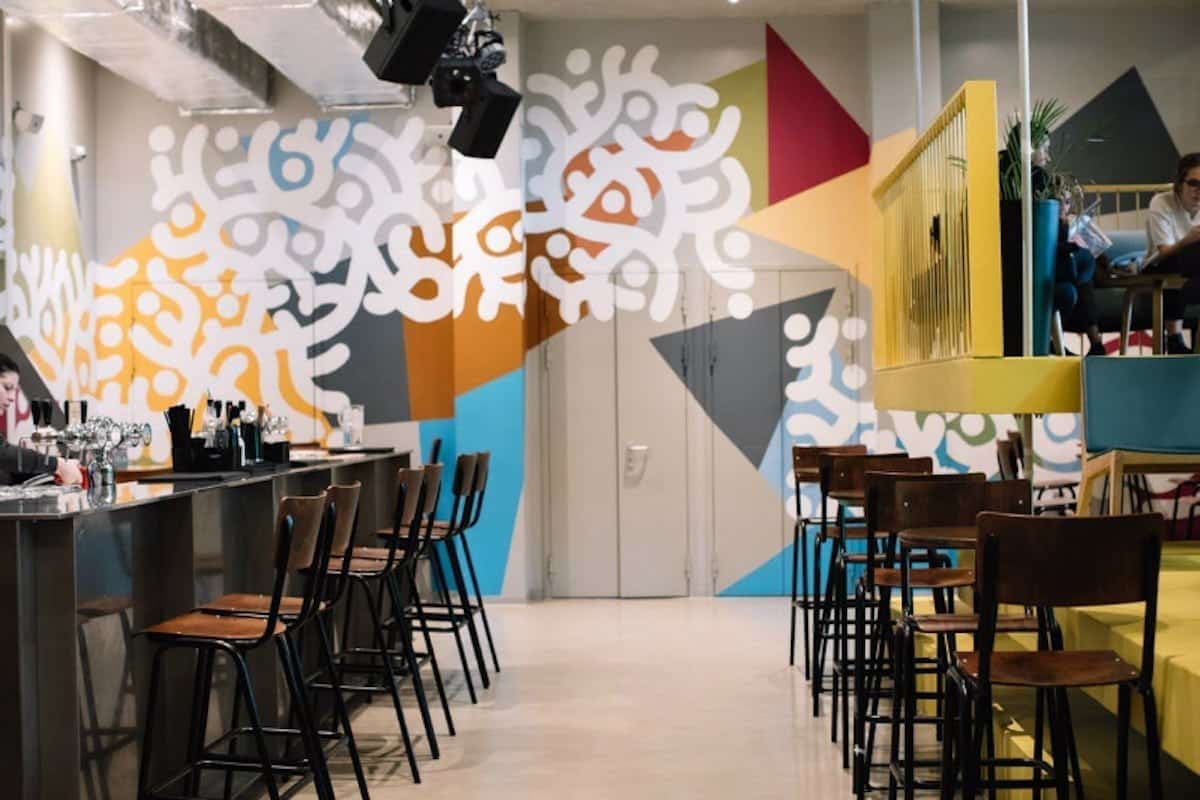There is strength in numbers: this adage perhaps holds more true of the art world than any other field. Museums and exhibition spaces are more likely to show artists with an international profile, and there are few ways to gain greater exposure than by joining an artist collective. Whether artists are creating collaborative installations or engaging in performances, the art collective functions as a platform for all of its members. An artist collective has the ability to participate in more exhibitions a year, bringing in larger overall audience numbers and increased exposure for individual artist members on an international scale. Artist collective members also expand and grow on their inherent strengths, and by highlighting shared aspects of the individual members’ practices, can make significant advancements for the larger art world as a whole.
Benefits of Joining An Artist Collective
In the Phaidon publication Co-Art: Artists on Creative Collaboration, well known feminist art collective Guerilla Girls notes on Artspace the rise of the artist collective that “there are many collaborative practices … in film, theater, music. The concept of the individual genius is outdated.” While individual artists may benefit from having more flexibility and are able to respond quickly to open calls, artist collectives benefit from the ability to be multiple places at the same time. Particularly for international events such as art fairs or biennials, working as part of an art collective allows artists to have greater reach by participating in multiple events simultaneously through shared efforts.
For other artists, working together can be a formative experience in professional development. Artist duo Michael Elmgreen and Ingar Dragset have worked together for over twenty years, and note that “art collaboration is how we’ve shaped our identity as artists.” Similarly, artist duo Joao Enxuto and Erica Love of The Original Copy create a shared body of work as artistic innovators by forging a collaborative practice centered around dialogue. The duo have explored a wide range of topics on an international scale as a result of their impactful collaborative work; some of their most powerful work includes institutional critique exploring labor conditions and value systems,
There are arguably four main ways in which an art collective can generate increased exposure for its member artists. First, members can participate in a singular, contiguous body of work. By engaging multiple members with a single subject matter or artistic format, more evidence can be compiled to establish the collective as a leader in their respective field (sculpture, performance, etc.)

Art collectives offer a platform for getting your work to a wider audience.
One prominent example of this in action is the Bruce High Quality Foundation’s revered ongoing series, Public Sculpture Tackle. In this body of work, a member of the artist collective wearing protective sports gear “tackles” an existing public sculpture. The artists have succeeded in questioning the ways in which publics engage with sculpture in public environments, and this series has resulted in attention from artnet and the New York Times, among other news outlets. By proving that their work embodies a singular focus, and incorporating a healthy dose of criticism and humor, the Bruce High Quality Foundation has cemented a legacy for engaging and topical artwork.
A second way that art collectives can prove beneficial to individual artists is by leading international conversations on certain subjects exhibiting the art collective’s particular area of expertise. One example is Raqs media collective. The group is based in New York City and strongly identifies with the the s a r a i initiative, a platform contemplating urban space and the existing interface between cities and technology. Through this shared focus on urbanism and new technologies, members of the artist collective are continually invited to participate in worldwide conversations on artistic practice within the existing frameworks of new technology, society, and the culture of urbanism. Through the years, the collective has been invited to exhibit at the Tate Exchange and the Isabella Stewart Gardner museum, among other locations. Their joint work in research-based practice rooted in a South Asian perspective enables them to contribute to a global art community seeking to create more inclusive dialogues.
Thirdly, collectives have the advantage of highlighting differences between artists within the group while indicating the strength of the overall cohort within a specific medium. One example is the emerging artist collective MATERIAL GIRLS, a female-identifying collective of sculptors and digital artists based throughout the U.S. and internationally. MATERIAL GIRLS provides a platform for its individual members by designing their exhibits collaboratively but allowing individuals to present specific components that they contribute to the greater whole. This way, the digital artists and sculptors see their work as part of a unified installation while presenting their work as distinct pieces within the overall exhibition. The collective is part of the rising wave of post-internet art collectives. Hilliary Gabriel, artist and co-founder of MATERIAL GIRLS, notes that collaborating in a collective environment has “energized my practice and generated a larger conversation around work and identity as an artist…Our combined skill sets make possible the diverse installations that we’ve created thus far.” Of the drawbacks of working as an artist collective, Gabriel notes the challenges of working together through different time zones as the most notable setback.
A fourth advantage to working as a collective group means that artists can rally around a common, shared goal. Los Carpinteros is an art collective from Cuba that works as a self-styled “itinerant” art collective, traveling internationally to create art installations and exhibitions centered on themes that explore various social issues related to social inequality. This impetus was originally sparked by problems the group had encountered within their homeland of Cuba. Members of Los Carpinteros have noted in a BOMB Magazine interview that originally their work stemmed directly from Cuban social history of the early 1990s, pointing out that together their work has evolved to focus more on design and its social impact.
Join or Start Your Own Artist Collective
There are clear and demonstrable reasons for joining an artist collective, but how does one go about joining or founding their own? There are a few resources that visual artists can draw from in forming collective groups. One starting point is an artist’s educational background: staying in touch with other peers from one’s undergraduate or graduate degree program, it may come to light that other artists are working in a similar vein. This can be a starting point for a conversation around collaborating on artwork. It’s always best to initiate a collaboration by working together on a single exhibition or artwork; once two or more artists have worked together, it will become more clear how an ongoing partnership would work out for both artists.

To start an art collective, find artists who make work within a similar context.
Many artists have noted that when it comes to artistic identity, they may not only evolve as artists in their practice by joining an art collective, but may also shift their focus through the influence of others in the group over a sustained period of collaboration. For some artists, this shift can even arise through the shared bond of romantic attachment: some artist couples have made a lasting impact on cultural history through collaborating in their artistic practice, such as Marina Abramovic and Ulay, or even John and Yoko. Finally, through joining groups on social media outlets such as Facebook, it can become easier to identify artists working in a similar vein. Best practice again holds that artists should attend other artists’ exhibition openings and meet the artist in person, or gain a personal introduction in order to better understand another artist’s practice.
While working as an individual artist reaps its own share of rewards, the obvious benefits of joining an art collective can outweigh the need for ownership of individual artworks. It’s important to know the tenets one seeks to advance through their own artwork in order to better realize their work in the context of a group. Through collective work, artists have the opportunity to grow at an astronomical rate together as individual parts within a single, stronger whole.
